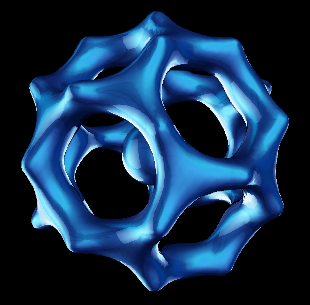We are proud to present the winner of the Smart Mobile Studio graphics competition!
And the winner is .. Bioptopia webgl demo by Mattias Andersson – Congratulations!
You can testdrive the demo live by clicking here (Chrome is prefered)
In Mattias own words:
The demo consists of two parts — the first part is about drawing isosurfaces constructed by using a marching cubes implementation by Aaron Hochwimmer. The second part unites the isosurfaces with an extension of the CFDG language, which I call “3D-CFDG” (see http://www.contextfreeart.org for the original 2D implementation.) This was an idea that I had planned to implement at some point and this contest seemed like the perfect opportunity.
We congratulate Mattias with the #1 demo – job well done!
About the author
I kindly asked if the author could write a few words about himself, his background in demo coding and where he came from in terms of technology (being old Amiga hackers we naturally asked him if he ever did some coding on 16 bit computers). He was kind enough to reply with a short description. Again — hat off Mattias! Great work!
Lennart asked me to write a few lines about myself, so here it goes:
While I was certainly around in the old Amiga days (I’m born in 1981), I was a bit too young to actively engage in the “demo scene” myself. However I did help a friend of mine set up a BBS (we spent a lot of time working on fancy ANSI animations.) Those days you would download things by dialing up different BBSs with your 56k US Robotics modem; things such as music modules, demos and other cool stuff.
Some of the more prominent demo groups at this time were “future crew” and “triton” and they made some really spectacular demos. Triton was from Sweden (like me) and they wrote an amazing piece of software called FastTracker II, which was really way ahead of its time as far as software development goes (IMO.) I guess one thing I learned from this episode is that you don’t have to be a huge corporation in order to produce something great that a lot of people can benefit from. Ideas always originate with the individual and by crafting your ideas into something useful, it will benefit the whole of humanity (and quite possibly your own ego as well.) I guess this is one of the things that have motivated me to participate in various open source projects, such as Graphics32. I have also worked for a few years on a quite advanced image editing software that incorporates a node-based filter graph editor as well as a whole bunch of filter modules. I’m planning to continue this project after releasing my current Android project (a Z-brush-like software for Android that seemed like a more achievable short-term goal. P.S. Very good to now be able to test it on a tablet!)
Alright, now some words about my contest entry. The interesting part is clearly the CFDG implementation that I’ve managed to extend to three dimensions. CFDG is a simple language for describing geometric vector objects. There are some basic operations: scaling, translation, rotation and color adjustment. Additionally you know some predefined 3D “drawables”, such as a sphere, a cube or an extrusion along a lattice (you can add any primitive you like.) You define rules that will recursively invoke other rules. Recursion stops when the current scale parameter is smaller than a certain threshold value. Multiple versions of a rule can be implemented, whereby the effective rule will be randomly selected. This produces some very interesting geometric objects as can be seen by the end of the demo. One challenge in the implementation was how to move from one 3D reference space to another space transformed by a certain rotation. Fortunately I realized that quaternions would work ideally for this application. I encourage anyone interested in 3D graphics to learn about the benefits of quaternions.
Final verdict
Norway and Sweden have always been like two brothers. We like to tell jokes about each other, since we live right next to each other on the map I mean), have fun competitions from time to time (like the fact that we beat the crap out of your ice-hockey team last year) and we all meetup in the viking ship demo party once a year. Following Norwegian tradition we decided to deduct 10 points from the demo since you are in fact from Sweden — but we have to admit that even then you still won, so fair is fair: great work Mattias! You won this compo lock, stock and barrel!

